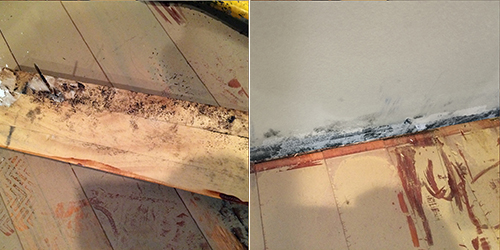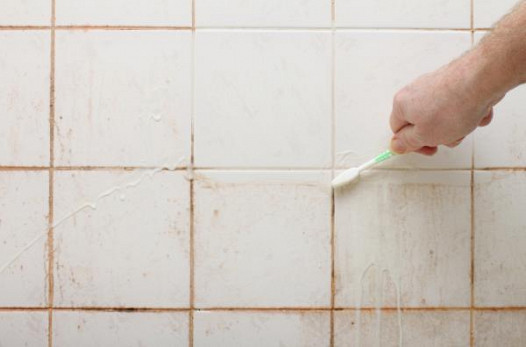Bathroom Water Damage - Ways To Stop This Happening
Bathroom Water Damage - Ways To Stop This Happening
Blog Article
Are you currently on the lookout for answers around Preventing Water Damage in the Bathroom?

The bathroom is exceptionally at risk for damp build-up as well as potential water damages as a result of the regular use of water in it. This article offers straightforward assessment methods to help spotting water damage threats.
The constant use of water in the restroom makes it extremely vulnerable for wet buildup as well as potential water damages. By evaluating it on a regular basis, you can decrease water related problems.
The following set of examinations is simple to perform and also must be done once in every 3 months in order to maintain your restroom in good shape and also to avoid potential water problems triggered by the bathtub, the shower, pipeline joints as well as plumbing, sinks, cabinets, and also the bathroom
Do not neglect executing these evaluations and be complete while doing them. Keep in mind that these basic evaluations can conserve you a lot of cash by supplying early signs for water damages
Bathtub as well as Shower
The shower and bath tub require unique interest and also maintenance. Examine the ceramic tiles and also replace if fractured. Ensure that there is no missing out on grout in between the ceramic tiles. Evaluate as well as change broken caulking at joints where the wall surfaces meet the flooring or the bathtub. Blocked drains as well as pipelines issues will certainly avoid the bath tub from drying as well as might suggest significant problems underneath the bathtub. Talk to a specialist immediately to prevent architectural damage. Take notice of discolorations or soft areas around the bath tub walls as they may show an internal leak.
Plumbing
Signs for water damages are hard to discover given that most pipes are mounted inside the walls.
Pay special interest to floor covering and walls dampness and stains as they might show an invisible plumbing issue. Inspect dampness levels in adjoining spaces too.
Sinks and also Cabinets
Sinks and cupboards are subjected to dampness and also moisture day-to-day and also are often overlooked. Inspect routinely under the sink as well as on the counter top above it. Repair any type of drip in the trap as it may recommend drainpipe troubles. Look around the sink, slow draining pipes might show an obstructed drainpipe. Change sink seals if they are fractured or loosened.
The Commode
The commode is an at risk water joint. Inspect the water lines as well as look for leaks around the bathroom seat, in the hose pipe, and under the water tank. If you detect any signs of dampness on the flooring around the commode, look for leakages in the toilet rim and tank seals.
Be aware that hanging commode dish antiperspirants boosts the possibilities for clogs.
Water Damage Signs In The Bathroom To Avoid Cleanup
Musty smell
This is one of the easiest signs to catch because musty smells are so odorous. The damp, earthy, moldy smell should be a big red flag. The smell will develop when moisture gets trapped in surfaces, and begins to facilitate mold growth. Leaking pipes under cabinets, inside walls, and behind shower fixtures will cause moisture to stay trapped and not dry, which will lead to mold growth and spread. As soon as you notice any musty smells in your bathroom, have it checked for hidden water damage and cleanup signs.
Visible mold
If the smell isn’t there to give it away, sometimes you will actually see mold growth. Finding mold in your bathroom is a serious problem, because mold is very harmful to your health. By the time mold growth is visible, it also means that water damage has already occurred and been present for some time. The only way the mold problem can be resolved is to find the source of the moisture and get it stopped. To safely and adequately remove mold, you need to have professionals handle the remediation. Do not waste any time in getting mold problems addressed, fixed, and sanitized so that you can protect you and your family from the many respiratory symptoms caused by mold exposure.
Damaged floors
Bathroom floors should be able to withstand some exposure to water while still remaining in good condition. However, when excess exposure or water leaks occur, they will begin to damage even the most water-resistant flooring. If you notice any cracking, bubbling, staining, or warping on your bathroom floors, there is probably a water leak somewhere causing the distortion. If you notice areas of the floor have become softer, or even have a spongy feeling, there is probably damage to the subfloor. Subflooring is typically made up of plywood. When plywood is exposed to water or moisture, it will absorb it. Once it has become saturated, the weight of the excess water will cause the wood to swell and soften. Check the floors in your bathroom frequently to catch any of these sings before they lead to damaged subflooring.
Changes on walls
When water leaks behind walls, it will cause changes in the drywall. Peeling plaster, blistering paint, and soggy wallpaper are all good indicators that excess water is building up behind the wall. Water leaking behind drywall will cause it to swell and be soft to the tough. If you start to notice gaps along the trim of your walls, or where tile meets the wall, it could also be a strong indicator that there is a leak behind the wall. Any changes, distortion, or damage on the walls should be evaluated as soon as you notice it to prevent further water damage and cleanup.

As a reader about Common Causes of Water Damage in a Bathroom, I figured sharing that editorial was really helpful. Sharing is caring. You won't know, you may be doing someone a favor. Thanks a lot for your time. Please check our site back soon.
Estimate Free Report this page